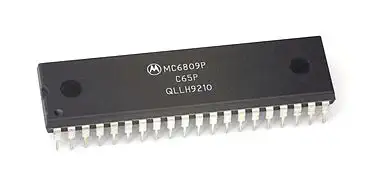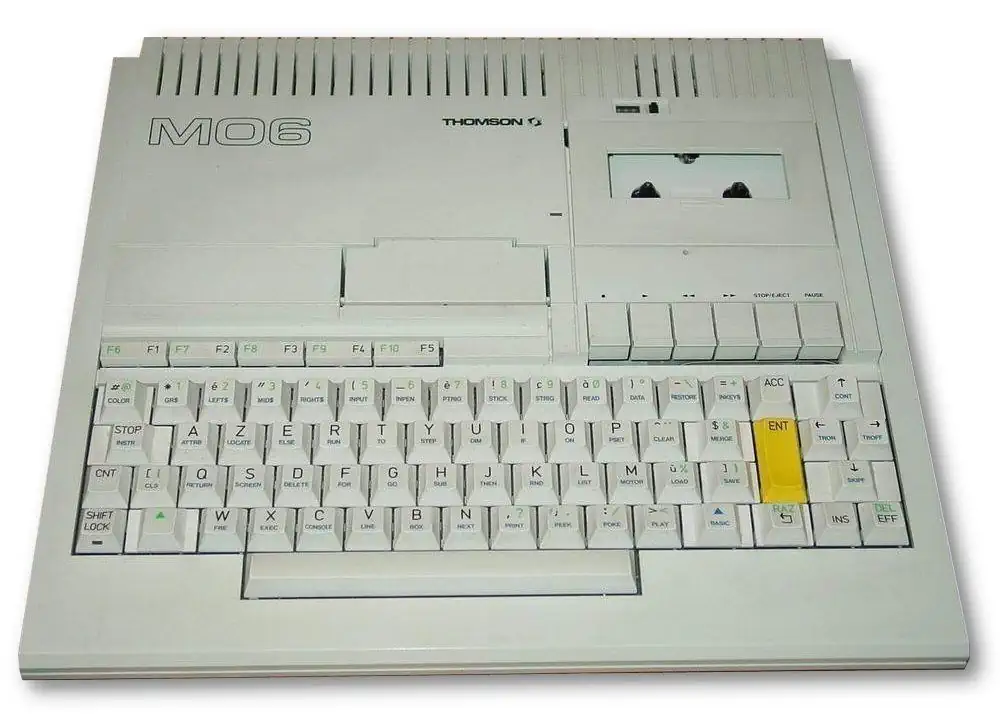Thomson MO6
The Thomson MO6 was the successor of the MO5. The MO6 featured much more memory (128kByte of RAM) and had superior graphics. The 16 color palette could now be defined from a total of 4096 colors and new graphics modes did away with the 2 colors per 8 pixel constraint that caused the infamous "color-spill" in graphics.
The Thomson MO6 was sold in Italy as the Olivetti Prodest PC128 with some minor exterior changes.
New Video Modes
- 320x200 in 16 colors, 2 colors per 8 pixels
- 640x200 in 2 colors
- 320x200 in 4 colors, no color restraints
- 160x200 in 16 colors, no color restraints
- 320x200 in 3 colors, 1 transparent, no restraints
- 320x200 in 2 colors, two screen pages
- 160x200 in 5 colors with 3 transparency levels
Like its predecessors, the MO6 used Audio Cassettes for external storage, but an optional disk drive could be used as well. The machine was backwards compatible with the MO5.
Motorola 6809 CPU
The Motorola 6809 is an 8-bit microprocessor with some 16-bit features. It was designed by Motorola's Terry Ritter and Joel Boney and introduced in 1978. Although source compatible with the earlier Motorola 6800, the 6809 offered significant improvements over it and 8-bit contemporaries like the MOS Technology 6502, including a hardware multiplication instruction, 16-bit arithmetic, system and user stack registers allowing re-entrant code, improved interrupts, position-independent code and an orthogonal instruction set architecture with a comprehensive set of addressing modes.


ROM: 64kB
VRAM: 16kB Sound Chip none Sound 3 channel 7 octaves Display Chip Thomson EF9369 Display 640x200, 320x200, max 16 out of 4096 colors Best Text 40x25 Best Color 16 colors from 4096 Best Graphics 640x200 System OS BASIC 128 Storage Cassette Tape


